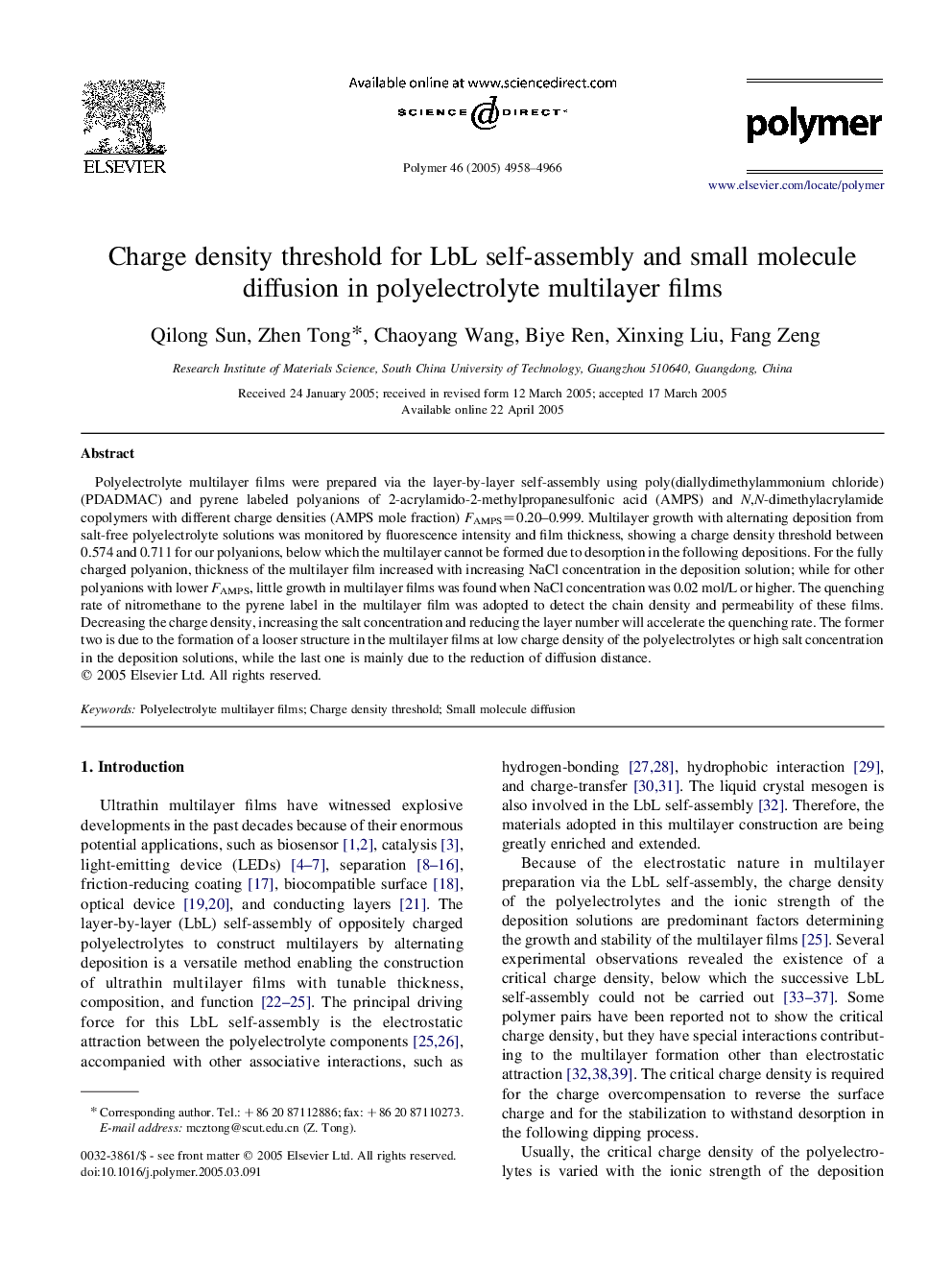| Article ID | Journal | Published Year | Pages | File Type |
|---|---|---|---|---|
| 5191661 | Polymer | 2005 | 9 Pages |
Abstract
Polyelectrolyte multilayer films were prepared via the layer-by-layer self-assembly using poly(diallydimethylammonium chloride) (PDADMAC) and pyrene labeled polyanions of 2-acrylamido-2-methylpropanesulfonic acid (AMPS) and N,N-dimethylacrylamide copolymers with different charge densities (AMPS mole fraction) FAMPS=0.20-0.999. Multilayer growth with alternating deposition from salt-free polyelectrolyte solutions was monitored by fluorescence intensity and film thickness, showing a charge density threshold between 0.574 and 0.711 for our polyanions, below which the multilayer cannot be formed due to desorption in the following depositions. For the fully charged polyanion, thickness of the multilayer film increased with increasing NaCl concentration in the deposition solution; while for other polyanions with lower FAMPS, little growth in multilayer films was found when NaCl concentration was 0.02Â mol/L or higher. The quenching rate of nitromethane to the pyrene label in the multilayer film was adopted to detect the chain density and permeability of these films. Decreasing the charge density, increasing the salt concentration and reducing the layer number will accelerate the quenching rate. The former two is due to the formation of a looser structure in the multilayer films at low charge density of the polyelectrolytes or high salt concentration in the deposition solutions, while the last one is mainly due to the reduction of diffusion distance.
Keywords
Related Topics
Physical Sciences and Engineering
Chemistry
Organic Chemistry
Authors
Qilong Sun, Zhen Tong, Chaoyang Wang, Biye Ren, Xinxing Liu, Fang Zeng,
